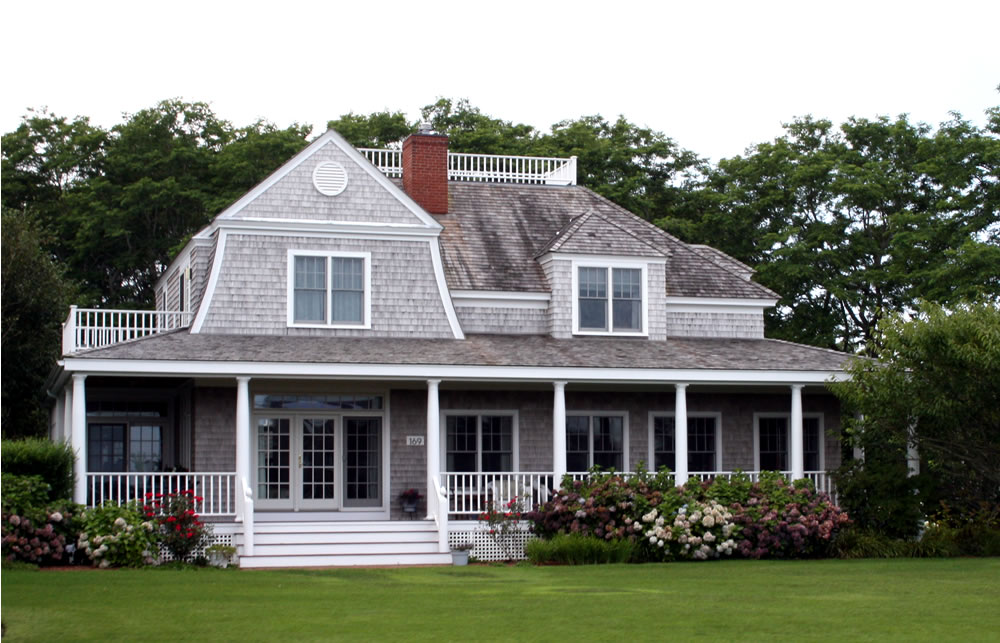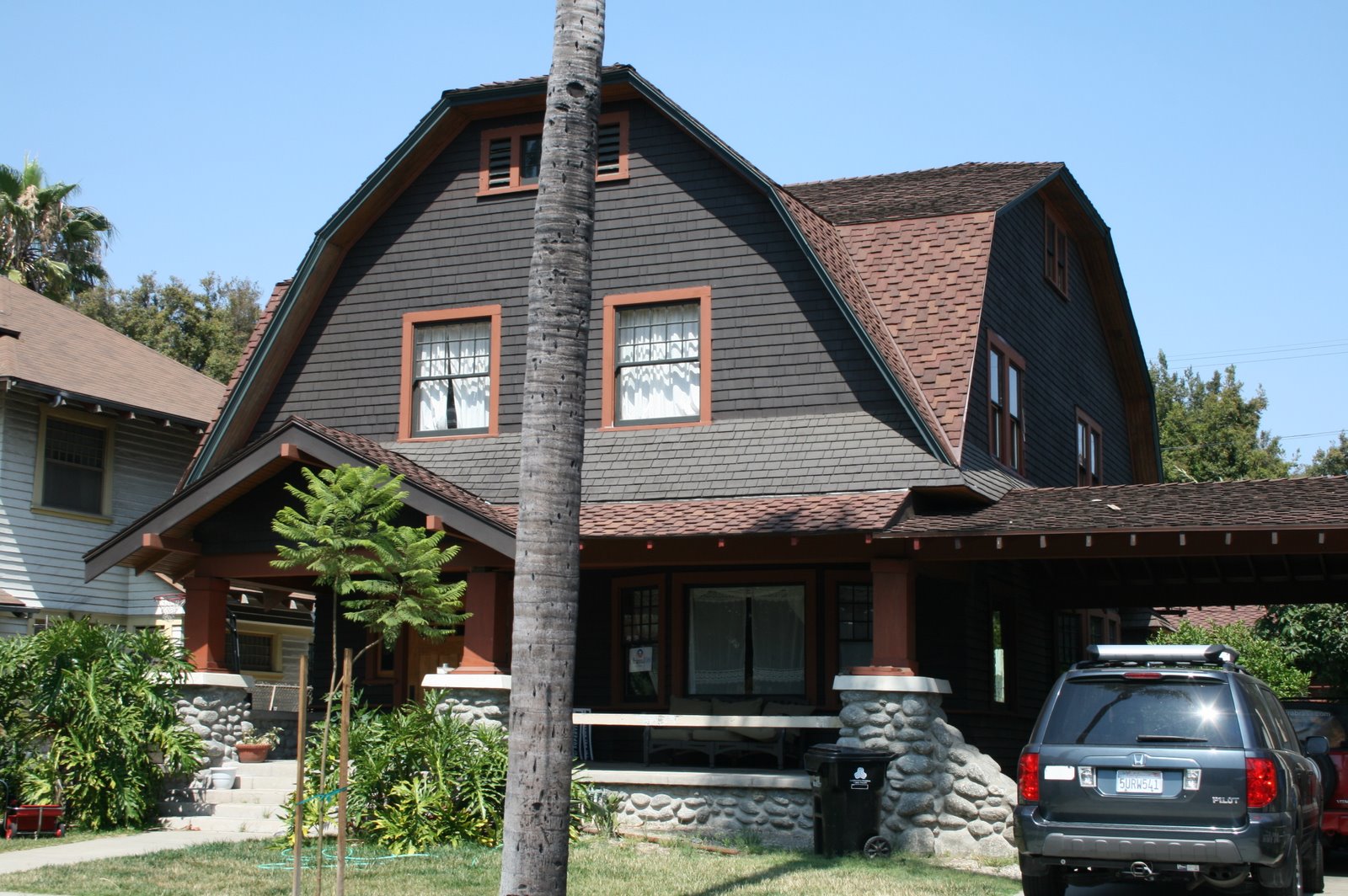Neo-Classical (Greek Revival) Style Home: "The national style" Greek revival house consisted of pillars, columns, formal balance, symmetric appearances, brick, and wood.

Queen Anne Style Home: A romantic Victorian house with porches, balconies, and bay windows were used to add variety and "bring the outside in." Elaborate exterior woodworking called "gingerbread".

Bungalow Style Home: The bungalow wood was left natural or stained, with exposed rafters, and long low picketed roof with a shallow "shed" dormer.

Ranch/Split Level Style Home: The ranch is partly shaped by the automobile. The front dominated with a large "picture window" and by a large garage.

 Prairie Style Home: Horizontal lines rule the Prairie style, accented by wide eaves. Windows are grouped in horizontal bands, and bricks are narrow to accent the horizontal. The Prairie style home allows natural textures and lines of the structure to speak for itself.
Prairie Style Home: Horizontal lines rule the Prairie style, accented by wide eaves. Windows are grouped in horizontal bands, and bricks are narrow to accent the horizontal. The Prairie style home allows natural textures and lines of the structure to speak for itself. 
Colonial Revival Style Home: Most popular housing style for a family. These houses are inspired by Dutch Colonial, Spanish Colonial, New england, and Georgian.

International School and Contemporary Style Home: These houses are "Neo-Eclectric." Theses houses include a turret, a set of palladian windows, arched windows, and sharp gables. A Modern Art Style "less is a bore."

Cape Cod Syle Home: Characterized by a low, broad frame building, generally a story and a half high, with a steep, pitched roof with end gables, a large central chimney and very little ornamentation. Very simple: symmetrically designed with a central front door surrounded by two multi-paned windows on each side. Homes were designed to withstand the stormy, stark weather of the Massachusetts coast.
 Colonial Revival (Dutch) Style Home: A style of domestic architecture, primarily characterized by gambrel roofs having curved eaves along the length of the house.
Colonial Revival (Dutch) Style Home: A style of domestic architecture, primarily characterized by gambrel roofs having curved eaves along the length of the house.Neo-Eclectric Style Home:considered an outgrowth of postmodern architecture. It differs from postmodernism in that it is not creatively experimental.




No comments:
Post a Comment